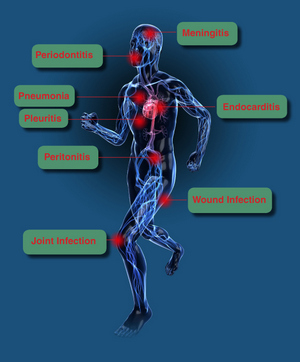Molecular Pathogen Diagnosis
SepsiTest™-UMD CE IVD (not available in USA)
SepsiTest™-UMD is the unbiased way of culture-independent detection and identification of bacterial and fungal pathogens in body fluids, tissues and swabs for routine diagnosis.
 |
Characters and benefits:
|
SepsiTest™-UMD is a CE IVD-marked molecular test for the culture-independent detection and identification of a broad range of Gram-positive bacteria, Gram-negative bacteria and fungi within a working day. Until today, more than 1,350 microorganisms have been identified in clinical and other specimens.
Clinical evaluations clearly show the benefits of SepsiTest™-UMD in terms of precise identification of pathogens at low loads, ease of processing of a variety of clinical specimens by only one protocol and high diagnostic sensitivity and specificity. SepsiTest™-UMD is the ideal tool for daily routine diagnosis of material that often remain negative in culture because of fastidious pathogens or antibiotic treatment before sampling.
Typical specimens are:
- Whole blood, CSF, BAL, synovial aspirates, ascites fluid, peritoneal aspirates, pus, blood culture, ultrasonic fluids (protheses)
- Tissues biopsies, including abscesses, bones, organs, heart valves, stents, pacemakers and others
- Swabs from wounds, organs, bones, prostheses, teeth and others
Larger fluid samples (up to 10 ml) like aspirates from the abdomen or urine can be diagnosed by using the CE IVD-marked Add-On 10 in conjunction with SepsiTest™-UMD.
Sequencing strategy and BLAST analysis: Here you find more details about the sequencing strategy used in Molzym's IVD kits and the free online tool SepsiTest™-BLAST for sequence analysis.
Sample storage: In case of studies or long-term analyses, appropriate storage conditions of your samples are required to protect your microbial cells. Click here for more information.
Automation: The process of microbial DNA enrichment and isolation from body fluids and tissue samples is also available semi- and fully automated. Click here for more information.
Order information:
| Kit |
Application
|
Content
|
Order No.
|
Quotation Request
|
|
SepsiTest™-UMD CE IVD |
Fluids, tissue biopsies and swabs |
24 reactions
|
U-010-024
|
|
|
48 reactions
|
U-010-048
|
|||
|
Add-On 10 CE IVD |
Fluids up to 10 ml; to be used with SepsiTest™-UMD
|
24 reactions
|
U-120-024
|
|
|
48 reactions
|
U-120-048
|
Download section:
| Product Flyer | Version |
| SepsiTest™-UMD Product Flyer (English) | V06 |
| SepsiTest™-UMD Product Flyer (German) | V01 |
| Manuals | Version |
| SepsiTest™-UMD Manual (English) | V03 |
| SepsiTest™-UMD Short Manual (English) | V04 |
| Other | Version |
| Open list of microorganisms found in clinical and other specimens by sequencing | March 2023 |
| Flyers Versions Overview | April 2024 |
Please inquire for more detailed information, applications and references at Diese E-Mail-Adresse ist vor Spambots geschützt! Zur Anzeige muss JavaScript eingeschaltet sein! or call at +49 (0) 421 / 69 61 62 17 or visit our Blog.
Selected references:
Tkadlec J, Krutova M, Matejkova J, Nyc O, Drevinek P (2018) Bloodstream infection caused by Bacteroides denticanum, a close relative of Bacteroides pyogenes, misidentified by MALDI TOF-mass spectrometry. Anaerobe 54, 23-25.
Marsch G, Orszag P, Mashaqi B, Kuehn C, Haverich A (2015) Antibiotic therapy following polymerase chain reaction diagnosis of infective endocarditis: a single centre experience. Interac Cardiovasc Thorac Surg 20, 589-593.
Meyer T, Franke G, Polywka SKA, Lütgehetmann M, Gbadamosi J, Magnus T, Aepfelbacher M (2014) Improved detection of bacterial central nervous system infections by use of a broad-range PCR assay J. Clin. Microbiol 52, 1751-1753.
